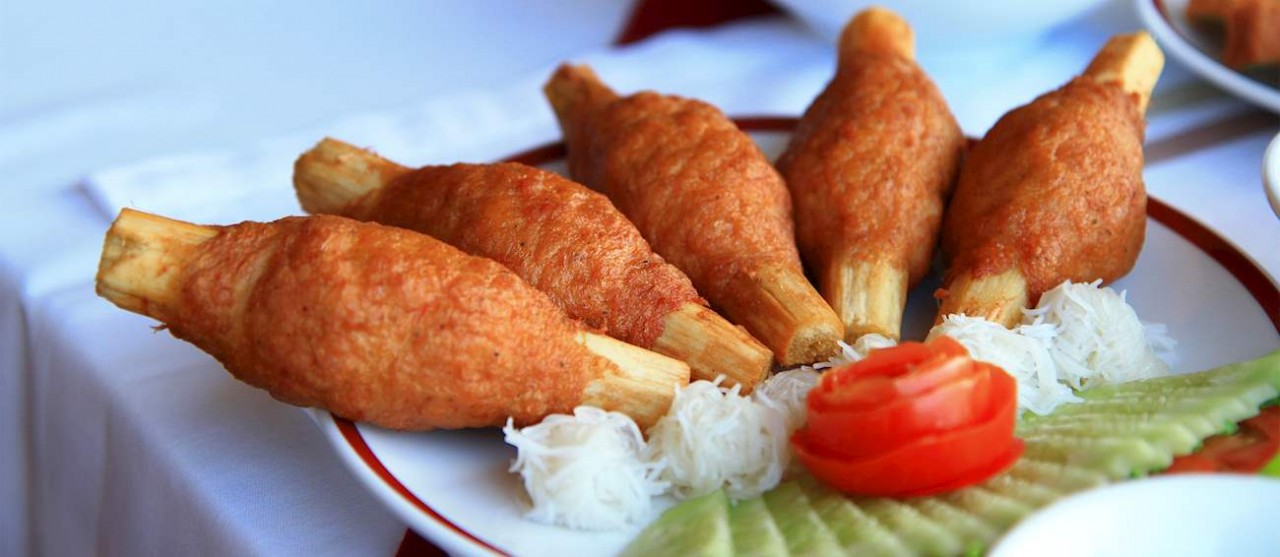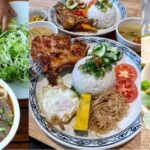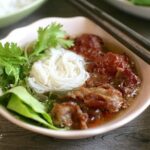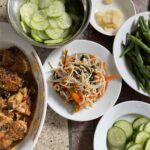Sugarcane shrimp, a traditional delicacy, consists of pureed shrimp wrapped around a small piece of sugarcane. Before this, the shrimp mixture is seasoned with a blend of spices, including garlic, sugar, and salt. Some variations also include ground pork, and the entire package is then steamed, grilled, or fried, as described by Taste Atlas.
While shrimp paste used to be a special occasion treat, it has now become a popular appetizer and a fun local favorite. To enjoy this dish, the shrimp is removed from the sugarcane and served with rice vermicelli, raw vegetables, and a sweet and sour dipping sauce.
Hailing from Hue in Central Vietnam, this dish has spread across the country. Although traditionally reserved for celebrations, it is now commonly enjoyed as a starter or light bite. It can be eaten as a whole, or the shrimp can be taken off the cane, wrapped in lettuce, and dipped in sauce.
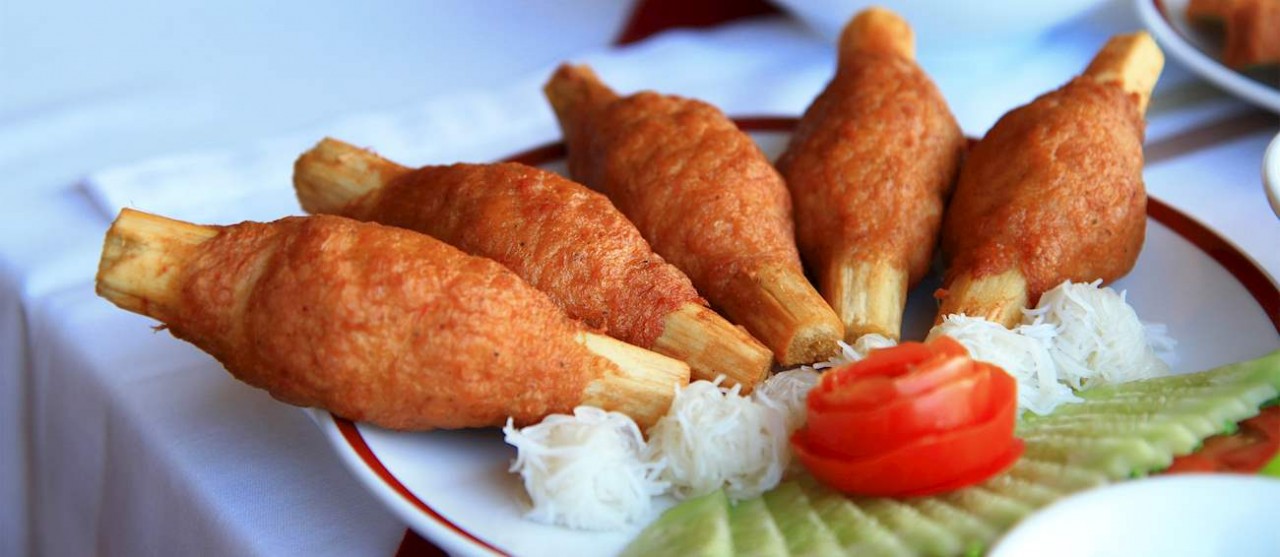
|
| This dish originates from Hue, Central Vietnam, but it is enjoyed throughout the country. Photo: Taste Atlas |
Accompanying the dipping sauce are often fresh vegetable slices and Banh Hoi rice noodles, creating a complete culinary experience.
Matija Babić, the founder of Taste Atlas, assures that the food and beverage rankings are based on the opinions and reviews of food experts and critics, guaranteeing the reliability of their awards.
The famous Vietnamese spring rolls are typically served with a dipping sauce that strikes a perfect balance between salty, sweet, and sour. This sauce is crafted from fish sauce, lemon juice, sugar, pepper, minced garlic, and chili, and it can be enhanced with pickled carrot, green papaya, or kohlrabi.
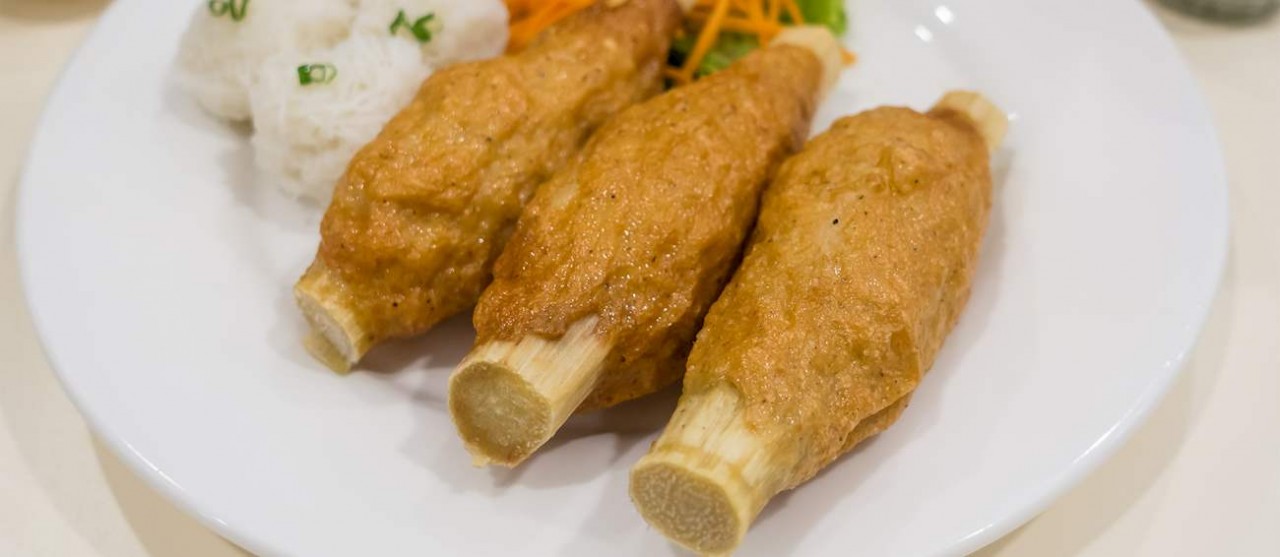
|
| Apart from the dipping sauce, Chao Tom is often accompanied by sliced fresh vegetables and Banh Hoi rice noodles. Photo: Taste Atlas |
The versatility of spring rolls allows for variations in their serving style. For example, they can be served with or without fresh vermicelli, as seen in the case of fried Vietnamese spring rolls. On the other hand, fresh Vietnamese spring rolls, pho Vietnamese spring rolls, or cuon diep (vegetarian lettuce rolls) shine when served with only the dipping sauce.
The classic fried Vietnamese spring rolls are a culinary masterpiece, with a filling of minced pork, shrimp, egg, vegetables, glass noodles, and spices, all wrapped in rice paper and fried to a light brown color. These rolls are best served hot, accompanied by dipping sauce and vermicelli. Depending on the region, you may hear them called “cha gio” in the south or “nem ran” in the north.
Goi cuon, a fresh take on Vietnamese spring rolls, are served without frying, leaving the ingredients either cooked or raw. Typically, these rolls are made with boiled pork, shrimp, vermicelli, herbs, and vegetables. For a vegetarian option, simply exclude the meat and add tofu and mushrooms instead.
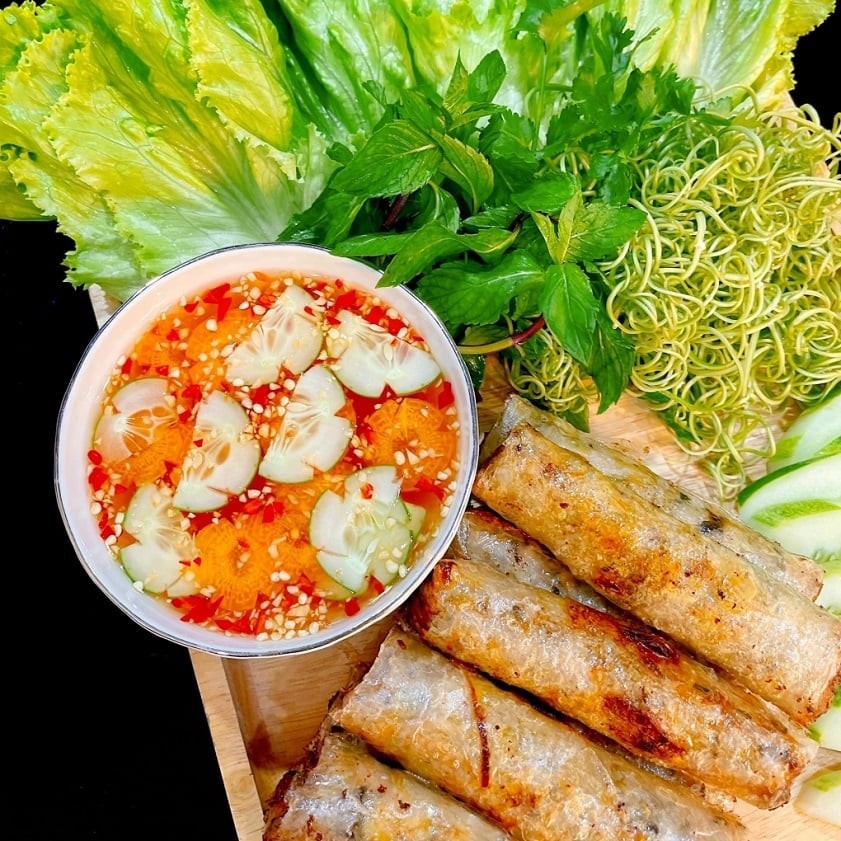
|
| Dipping sauce is the key to enjoying Vietnamese spring rolls. Photo: Vinpearl |
Pho Cuon, a unique variation, uses fresh rice sheets instead of dried rice paper, filled with beef, herbs, and vegetables. These rolls are served with a salty, sour, and sweet dipping sauce, making them a popular choice in the Truc Bach Lake area of downtown Hanoi.
Vietnamese spring rolls are not just a tasty treat but also a nutritionally balanced option due to the diverse range of ingredients they encompass.
Vietnamese cuisine has gained global recognition, and among its many delights, Vietnamese spring rolls stand out as one of the most popular choices. With various variations available across the country, you’ll have no trouble finding these rolls wherever you go in Vietnam. It’s challenging to pinpoint the best spring rolls due to the diverse ingredients and regional specialties.
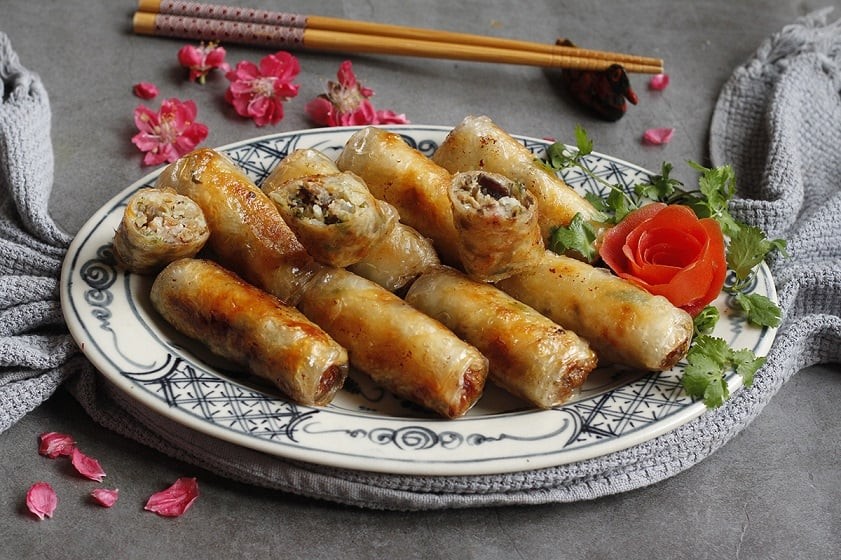
|
| Fried Vietnamese spring rolls are a tasty treat. Photo: Vinpearl |
Whether you find yourself in Hanoi, Ho Chi Minh City, Phu Quoc, Nha Trang, Hoi An, or Da Nang, you’ll have ample opportunities to indulge in the many variations of Vietnamese spring rolls.
When planning your trip to Vietnam, be sure to consider your accommodation options to ensure a comfortable stay while exploring the culinary delights of this beautiful country.
The Capitalist’s Cookbook: Hanoi, a Culinary Capital Unveiled.
Hanoi has been voted one of the top 15 culinary destinations globally by travelers on Tripadvisor, and it’s easy to see why. The city boasts a vibrant food scene with a unique blend of flavors and a rich cultural heritage that comes alive in its cuisine. From the humble yet iconic pho to the exotic and diverse street food, Hanoi offers a culinary journey like no other. It’s a food lover’s paradise, where every bite tells a story and every dish is a celebration of Vietnam’s vibrant culture and history.
Taste of Quang Ninh: A Festival of Flavours
The Quang Ninh Food Festival is back and bigger than ever! This year, from December 26-29, the northern province of Quang Ninh plays host to this culinary extravaganza, with Ha Long City serving up a treat for foodies. With nearly 130 booths, it’s the biggest festival yet, offering a smorgasbord of delicious delights and a true celebration of Vietnamese cuisine.
The Tasty Takeover: Vietnamese Cuisine’s Global Conquest
Vietnamese cuisine has been making waves on the global stage, with a string of notable achievements that have put it firmly in the spotlight. The country’s culinary delights have been honored at prestigious awards ceremonies, wowing attendees with their unique flavors and vibrant culture. International festivals and events have also showcased the allure and diversity of Vietnamese cuisine, with its rich history and traditional cooking methods impressing food lovers worldwide. Many famous politicians and business leaders have embraced and promoted Vietnamese culinary art, recognizing its value as a cultural ambassador. The delicious flavors and rich cultural identity of Vietnam’s culinary heritage have become a powerful tool in promoting the country and its people in a positive light.
A Tasty Treat: Vietnamese Mom’s Pickled Mung Bean Sprouts and Garlic Chives
The Vietnamese culinary culture is a vibrant tapestry of flavors and colors, with rice as the heart and soul of every meal. A typical day in the life of a Vietnamese foodie involves a delicious dance of flavors, textures, and aromas. Imagine a table brimming with fragrant rice, a bowl of savory soup, a tantalizing array of dishes, and a cornucopia of vegetables, fresh and crisp, cooked to perfection, or pickled to add a tangy twist. It’s a culinary journey through Vietnam in every bite.

